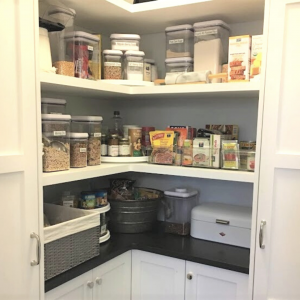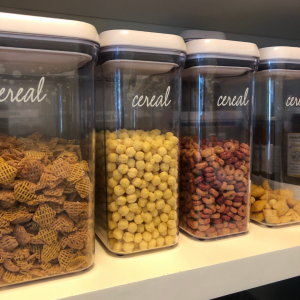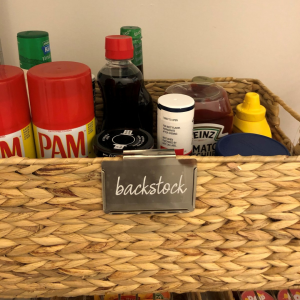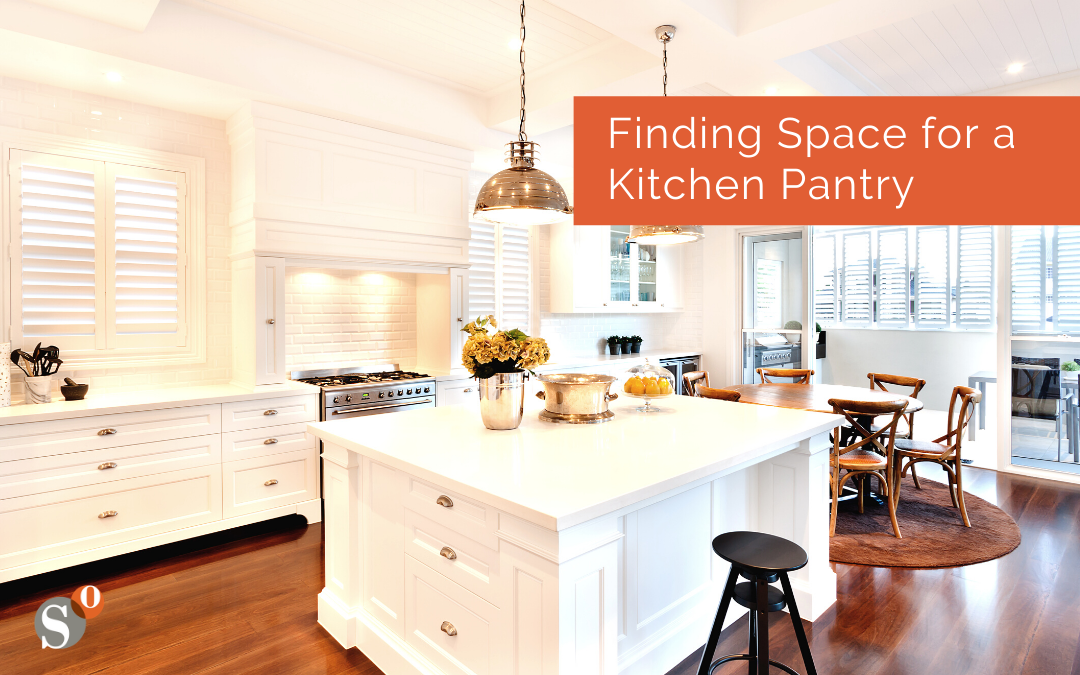Food cabinets and the kitchen pantry get a lot of use by everyone in the family. They can be hard to maintain, especially if you don’t have a well-defined space. Defining your pantry is important, it helps us stay organized, minimize purchases of duplicates, and avoid expired food.
 All of our pantry projects begin with an assessment of the physical space. We review existing cabinets to understand what works and what doesn’t for our client. Usually, it’s pretty clear what needs to be done to maximize space and improve functionality. Most often we can make simple adjustments by rearranging items. However, sometimes this can lead to a bigger kitchen reorganization task.
All of our pantry projects begin with an assessment of the physical space. We review existing cabinets to understand what works and what doesn’t for our client. Usually, it’s pretty clear what needs to be done to maximize space and improve functionality. Most often we can make simple adjustments by rearranging items. However, sometimes this can lead to a bigger kitchen reorganization task.
Small or vintage kitchens may lack sufficient food storage space. When this is the case, another way we create a defined pantry is by using freestanding furniture. Many options offer open and/or closed shelving that can be used to store food or other kitchen items. This furniture piece can be both decorative and functional. We’ve even repurposed an old-fashioned TV armoire. We love the pieces at Ballard. They’re pretty enough for any room in your home.
Another way to make kitchen pantry space is to add a built-in cabinet if there’s available wall space. A closet company can add a tall closed cabinet with shelves (or drawers depending on the depth of the cabinet) to provide more storage. One recent client extended a wall dividing her kitchen and dining room. Then, she added a shallow 12” floor to ceiling cabinet specifically for meal prep items.
Other considerations when planning your pantry:
 Store dry food in a cool place. An outside wall can be one of the best places to store food to reduce pests. These cabinets tend to be colder in the winter and cooler in the summer.
Store dry food in a cool place. An outside wall can be one of the best places to store food to reduce pests. These cabinets tend to be colder in the winter and cooler in the summer.- Eliminate food getting forgotten on the back of a shelf by using deep cabinets with pull-out drawers (vs. shelves). You can also replace existing shelves with drawers. In addition, combining items in bins or baskets provide the same functionality as a drawer.
- Lazy susans/turntables make high cabinet shelves more accessible. A quick spin and you can grab what you need vs. pulling out the step stool. Turntables come in a variety of sizes. I personally use large 18” turntables on the top two shelves of my large deep pantry cabinets.
- Lastly, adding more shelves can also make your pantry easier to maintain and provide more shelf space for specific categories of food.
 If kitchen storage is really limited, create an overflow storage area in an adjacent space (mudroom or basement). This area is used for bulk purchases of food and consumable items (napkins, paper towels, etc). It can also be used for less frequently used kitchen appliances. Often simply removing these larger items frees up cabinet and drawer space for your food. We often call these the Costco Closet or Overflow Pantry. We encourage our clients to “shop” this space first before going to the grocery store. Consider the location of the overflow pantry carefully to make sure it’s accessible.
If kitchen storage is really limited, create an overflow storage area in an adjacent space (mudroom or basement). This area is used for bulk purchases of food and consumable items (napkins, paper towels, etc). It can also be used for less frequently used kitchen appliances. Often simply removing these larger items frees up cabinet and drawer space for your food. We often call these the Costco Closet or Overflow Pantry. We encourage our clients to “shop” this space first before going to the grocery store. Consider the location of the overflow pantry carefully to make sure it’s accessible.
Kitchen pantry perfection starts with placement. The space you have will drive how you shop, providing the boundaries you need to stay organized in the kitchen.


